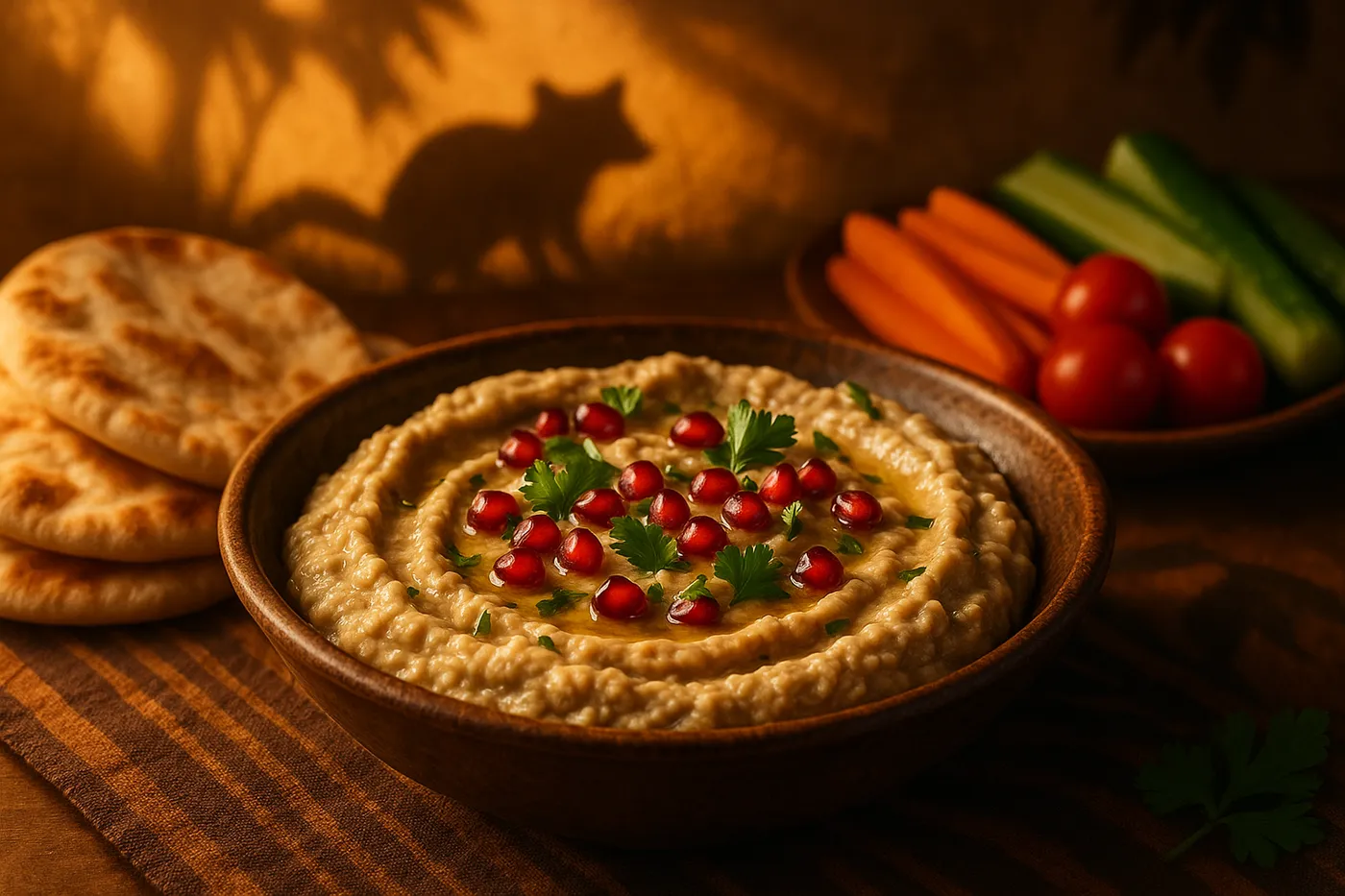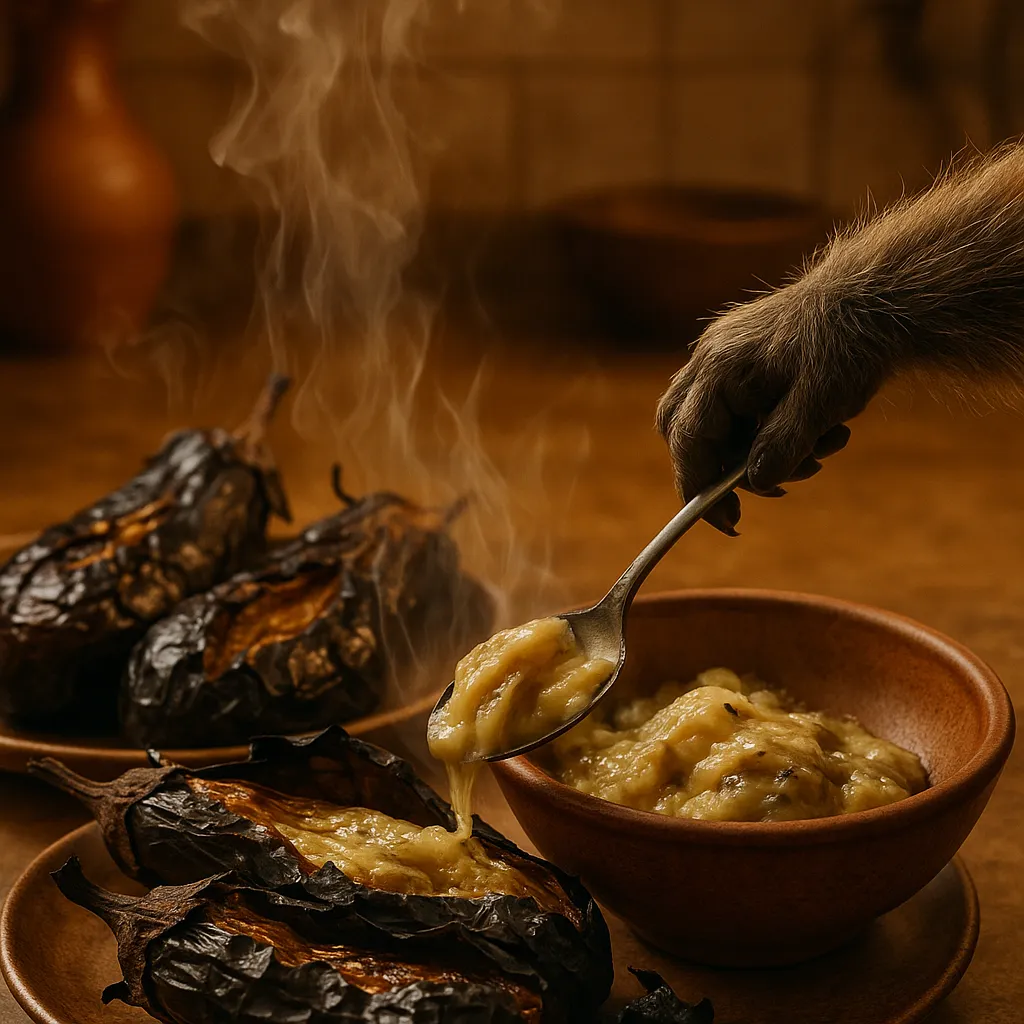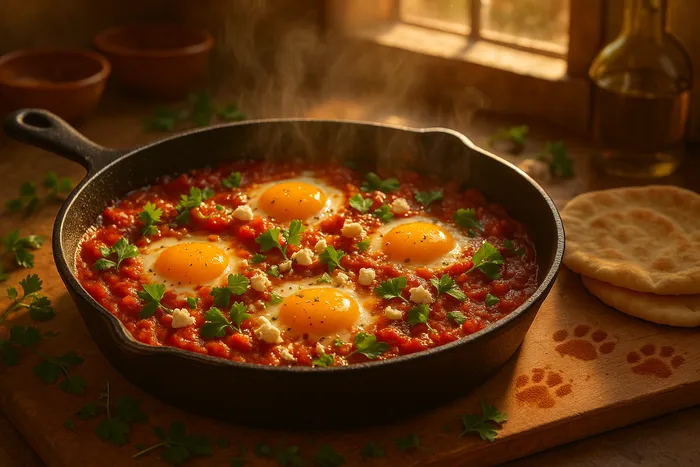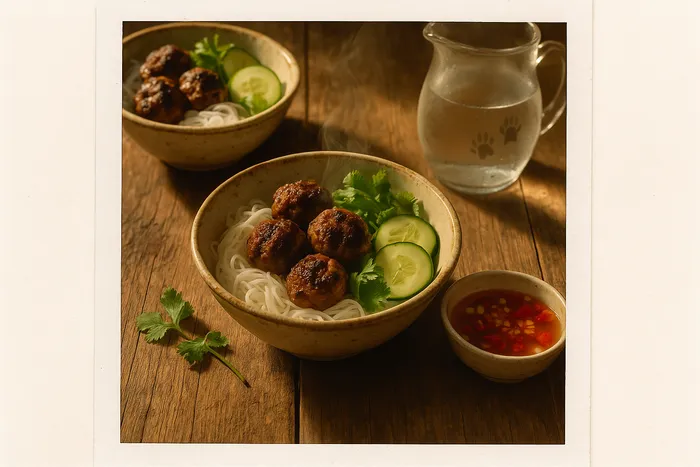appetizer
Baba Ganoush
Prep: 15 minutes
Cook: 45 minutes

Fire transforms everything it touches, and nowhere is this more obvious than in a proper baba ganoush. The eggplant that starts dense and bitter becomes silky and complex after a good char, developing those deep, smoky notes that make this dip irresistible.
The secret isn't in the tahini ratio or the lemon balance—though both matter. It's in getting your eggplants properly charred, either over an open flame or under a broiler, until the skin blackens and the flesh inside becomes impossibly tender.
Ingredients
🍆 3 large eggplants (about 2 pounds total)
🥄 3 tablespoons tahini
🍋 3 tablespoons fresh lemon juice
🧄 3 cloves garlic, minced
🧂 1 teaspoon kosher salt, plus more to taste
🫒 2 tablespoons extra-virgin olive oil, plus more for serving
🌿 2 tablespoons fresh parsley, chopped
🔴 Pomegranate seeds for garnish (optional)
🥖 Warm pita bread for serving
Process Timeline
timeline
title Baba Ganoush Making Process
"0:00" : Char eggplants on flame
"0:20" : Steam in covered bowl
"0:30" : Scoop out flesh
"0:40" : Drain in strainer
"0:50" : Mash & season
"0:55" : Add oil & serve
Charring Method Comparison
flowchart LR
subgraph "Gas Stove Method"
A[Direct Flame<br/>15-20 min]
A --> B[Best Smoky Flavor]
A --> C[Even Charring]
A --> D[Quick Process]
end
subgraph "Electric Broiler"
E[Broiler 4" away<br/>25-30 min]
E --> F[Good Charring]
E --> G[Turn Every 5 min]
E --> H[Watch Carefully]
end
subgraph "Grill Method"
I[High Heat Grill<br/>20-25 min]
I --> J[Excellent Flavor]
I --> K[Outdoor Option]
I --> L[Turn Frequently]
end
subgraph "Oven Backup"
M[450°F Oven<br/>45-60 min]
M --> N[Less Smoky]
M --> O[Pierce First]
M --> P[Turn Halfway]
end
B --> Q[All Lead to Great Baba Ganoush]
F --> Q
J --> Q
N --> Q
style A fill:#FF6B6B
style B fill:#69DB7C
style Q fill:#FFD93D
Instructions
Char the eggplants completely. If you have a gas stove, place them directly over the flame, turning every 5-6 minutes until the skin is blackened all over (15-20 minutes total). For electric stoves, broil them 4 inches from the element, turning occasionally, until charred and collapsed (25-30 minutes). The skin should be completely black and the eggplant should feel very soft when pressed.
Steam and cool. Place the charred eggplants in a bowl and cover tightly with plastic wrap. Let them steam for 10 minutes—this makes the skin easier to peel and finishes cooking the flesh.
Scoop the flesh. Cut the eggplants in half lengthwise and use a spoon to scrape out all the flesh, leaving behind the charred skin. Don't worry about getting every bit of char off—a few specks add to the smoky flavor.

Drain excess liquid. Place the eggplant flesh in a fine-mesh strainer for 10 minutes to drain off excess liquid. This prevents a watery dip.
Mash and season. Transfer the drained eggplant to a bowl and mash with a fork until mostly smooth but still slightly chunky. Stir in the tahini, lemon juice, minced garlic, and salt. Taste and adjust—you might want more lemon for brightness or more salt for depth.
Finish with oil. Drizzle with olive oil and mix gently. The consistency should be creamy but not loose. If it seems too thick, add a tablespoon of water.
Serve immediately or let it sit at room temperature for 30 minutes to let the flavors meld. Transfer to a serving bowl, create a shallow well in the center, and drizzle with more olive oil. Sprinkle with chopped parsley and pomegranate seeds if using.
Serving & Storage
Serve with warm pita bread, fresh vegetables, or as part of a larger mezze spread. Baba ganoush keeps in the refrigerator for up to 4 days—bring it to room temperature before serving for the best flavor and texture.
The smoky depth develops even more after a day, making leftovers often better than the fresh batch.
Remix Ideas
Spicy version: Add a pinch of cayenne or a finely chopped jalapeño with the garlic.
Herbed variation: Fold in chopped mint or cilantro along with the parsley.
Pomegranate molasses twist: Replace one tablespoon of lemon juice with pomegranate molasses for sweet-tart complexity.
Smoky paprika finish: Dust the surface with smoked paprika before serving.
The key to memorable baba ganoush is patience with the charring process—those blackened, collapsed eggplants are your foundation for something that tastes like it came from a Lebanese grandmother's kitchen, not a food processor.









